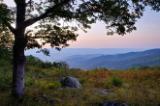Parks and Protected Areas
A New Perspective
By Jonathan Adams
Parks and protected areas remain the bedrock of conservation efforts worldwide, and for good reason. Parks work. In the most thorough review of the effectiveness of national parks thus far, a study of ninety-three large parks covering nearly 70,000 square miles in twenty-two tropical countries found that 83 percent of the parks were holding their borders against agricultural encroachment. These are not just the newer parks, either; the median age of the parks in the study was twenty-three years.
Parks serve an even broader purpose, however. Parks are about hope. In choosing what places to set aside permanently, we make a nearly unmatched statement of collective purpose, marking out clearly what we value and proclaiming a vision of who we want to be. As Wallace Stegner wrote, “The national park idea, the best idea we ever had, was inevitable as soon as Americans learned to confront the wild continent not with fear and cupidity but with delight, wonder, and awe.” But too often the parks are symbols not of hope and pride, but of fear and despair, statements not about the future but about attempts to hold back the tide of change.
The question comes down to what we see as the landscapes of our future. If we are prepared to abandon the notion of stewardship and allow all manner of destructive land uses everywhere except in those few places we call parks, then the parks must be fortresses. That is a bleak vision, for those fortresses would, like all fortresses, eventually fail. Parks should instead be the foundation stones of communities rather than fortresses, beloved places set aside because they remind us of what we must protect everywhere, rather than to protect the last of something.
Yet, important as they are, both symbolically and practically, parks can take us only so far in our conservation efforts. A park, perhaps emblazoned on our imagination by Yellowstone National Park, fundamentally does one thing and does it extremely well: It prevents the land within its borders from being transformed into something entirely new—a farm, a factory, a subdivision.
A park does not prevent any number of other disasters, however, from the invasion of aggressive exotic pests to the construction of towns on its borders that prevent species from moving in and out, to climate change that rearranges the ecological dynamics of entire regions and Earth itself. Effective conservation at those broader scales demands that we consider what happens both inside parks and in the landscapes in which the parks are embedded. Traditional conservation skills like wildlife management and even the more recent scientific specialties like landscape ecology will not suffice by themselves. Conservation must come to grips with the ecological context and also with the emotional, value-laden, and inescapably political context of each and every conservation landscape.
The political context must include the human communities that surround parks, as in Las Cienegas, as well as the more distant communities that value parks and wildlands as refuges or simply as visions of wilderness that they may never see. Effective conservation, therefore, means dealing with the things people do, which requires working at human scales and at scales broad enough to encompass big animals and ecological processes operating over large areas and hundreds of years.
Conservation has rarely been able to function at such broad scales and has generally proceeded park by park. The limitations of that approach are now painfully clear. Yellowstone, with its nearly perfectly rectilinear shape, represents just a swatch cut from the fabric of the western landscape. Despite covering more than 3,400 square miles, Yellowstone faces threats that extend into three states, across the border into Canada, and beyond.
That vast landscape, the Greater Yellowstone Ecosystem, is by one estimate the size of Virginia. Greater Yellowstone now hosts all manner of land uses, creating a complex mosaic. Some pieces of the mosaic remain more or less intact, while human activity has completely transformed others. Studies have demonstrated that such a fragmented landscape poses grave threats to all manner of species, all the more because the fragmentation is usually irreversible. But the problem is as much social and cultural fragmentation as biological or ecological fragmentation.
Where Science, Community, and Values Intersect
Excerpted from Conservation for a New Generation, by Rick Knight and Courtney White, eds. Copyright © 2009 Island Press. Reproduced by permission of Island Press, Washington, D.C.
Go Straight to Your State
Learn about conservation and open space in your state.


